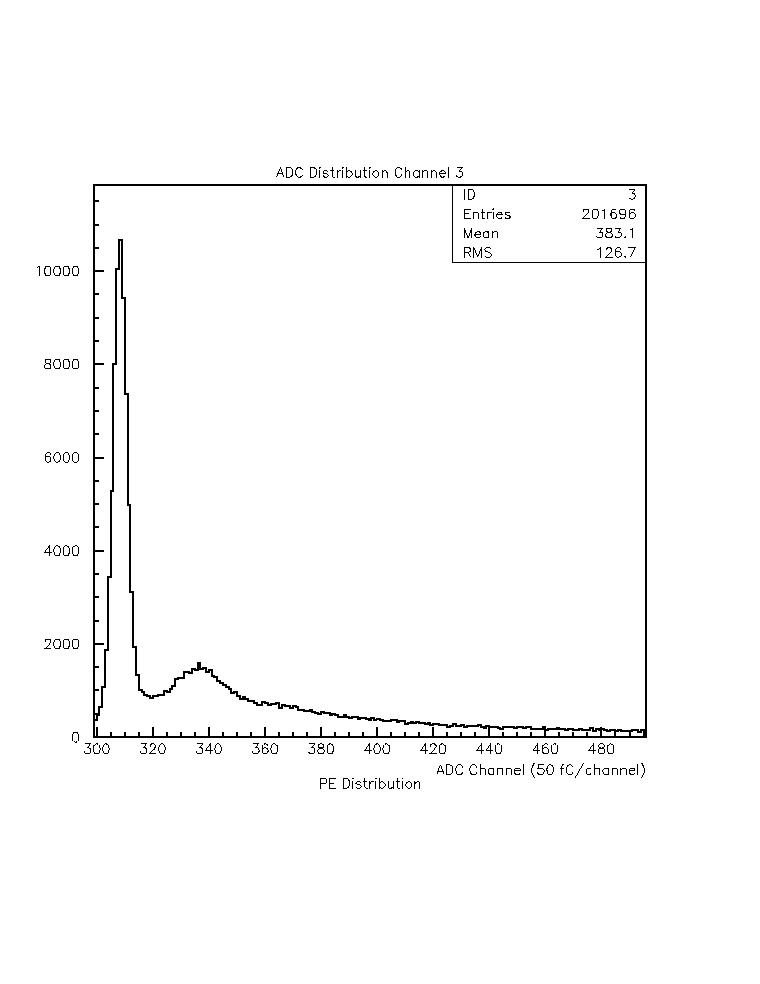
I have repeated Kelin's work, for Patch 1. I made my own determination
of the pedestals and 1 PE values for all the channels and then did my own
fits of PE vs. TOT (LOW and HI). Below I compare my results with
the currently used online algorithms.
Using these values for the pedestal and 1 PE levels I plotted a "profile" histogram of PEs vs. TOT; for each channel and for both LOW and HI TOT seperately. A typical channel is shown in Figure 2 below. Since the profile histogram plots the average at each point there will be a systematic error that is pulse height dependent (getting larger for larger pulse heights). This is due to the fact that the TOT value for a given PE level is never too short, but often too long. This systemtaic can be corrected by fitting to the median or peak of the TOT distribution instead of the average. This should be done.
I fit the Low TOT distributions to 3rd order polynomials and the High
TOT distributions to fourth order polynomials.
[PEs(ADC) - PEs(TOT)] / [PEs(ADC) + PEs(TOT)]/2
First I will show the results using the current online algorithms (this includes the edge finder). I only include an event in the plot if the PE level as determined by the adc is between 1 and 20. The first few plots are for individual channels. Note the pathological behavoir on some channels, the large widths, and different channel-tochannel systematics.
Channel 1: Channel 3:
Channel 7: Channel 13:
Channels 1-16: Systematic vs. PE Level:
Using the full width at half max (to ignore the large tails) I infer a resolution of about 30% (FWHM = 0.7) from the plot of the sum of channels 1-16. Much of this comes from the channel-to-channel systematic errors. For one of the better channels in this group (9) the FWHM = 0.4 for a resolution of 17% - consistent with Kelin's findings.
Below I show the same set of plots from this analysis. In this
analysis I did not use the edge finder. If the channel had 2 edges
I used the LOW TOT, if it had 4 edges I used the HIGH TOT.
Channel 1: Channel 3:
Channel 7: Channel 13:
Channels 1-16: Systematic vs. PE Level:
The resolution from the plot of all channels is nowabout 7% and for
a single channel about the same (a little bit narrower).
Notice that as advertised there is a systematic with increasing PEs.
But for the range of PEs that I plotted this is relatively small (~5%).